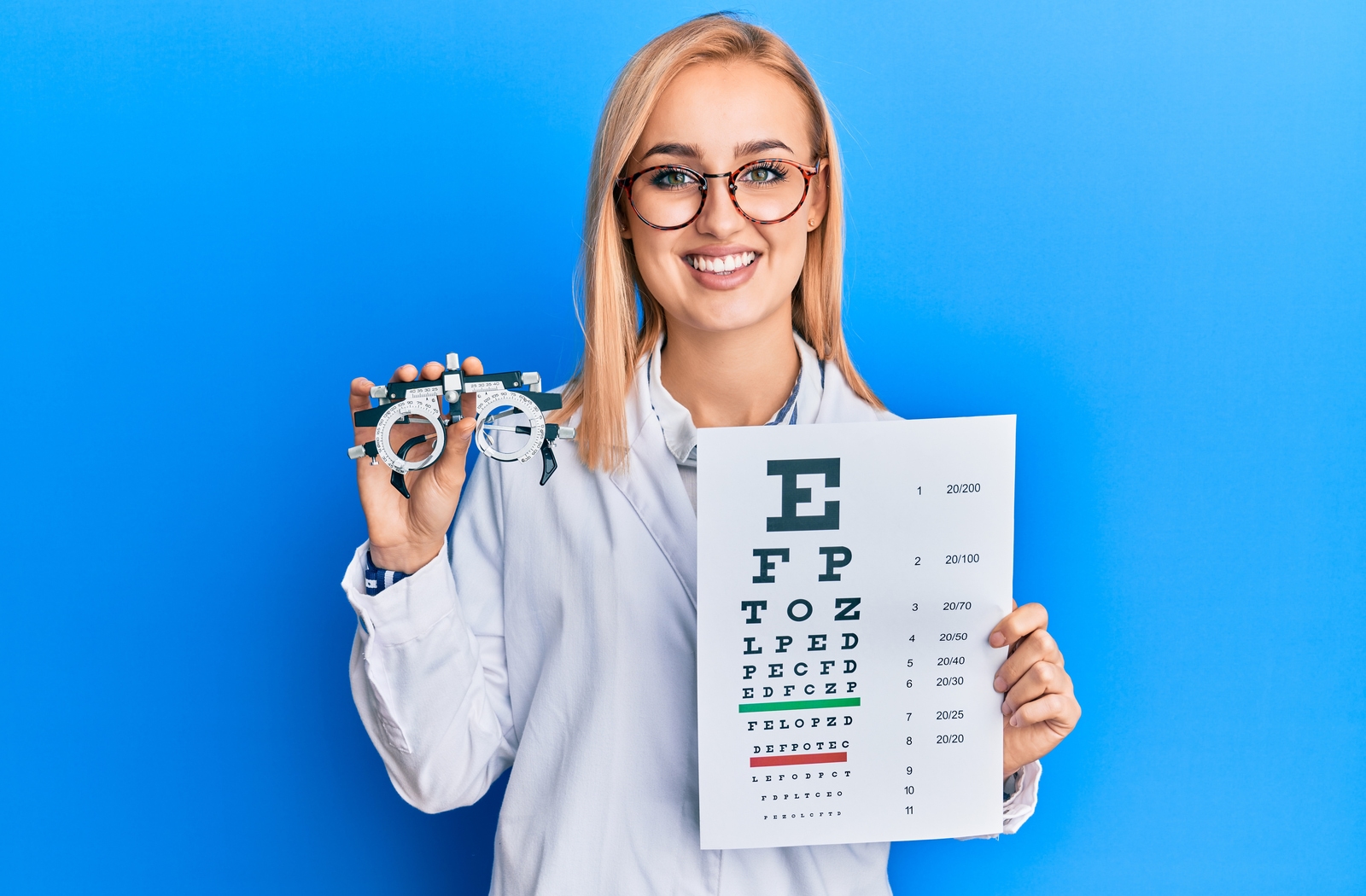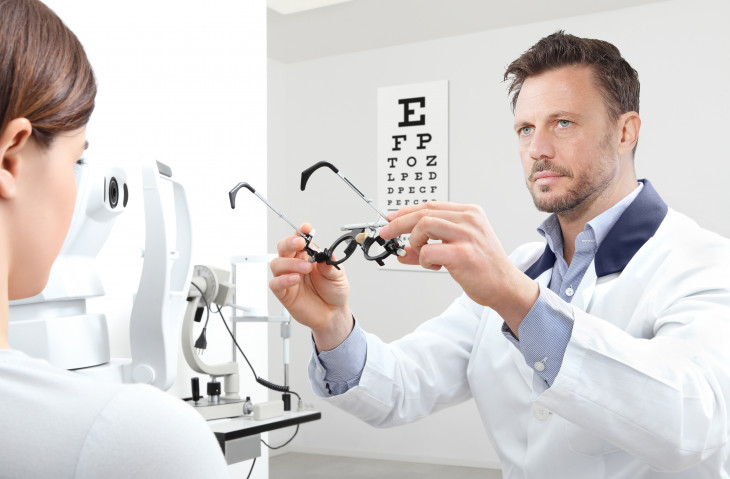Why Selecting an Eye Doctor Optometrist is Important for Your Eyes
Why Selecting an Eye Doctor Optometrist is Important for Your Eyes
Blog Article
Exploring the most recent Technical Developments in Optometry and What They Mean for Optometrists
In the ever-evolving area of optometry, current technological innovations are reshaping how experts approach eye care. From the precision of Optical Coherence Tomography to the nuanced insights supplied by AI-driven diagnostic devices, these advancements are setting brand-new criteria in person assessment and therapy. Teleoptometry is positioned to redefine access, making sure that competence goes beyond geographical restrictions. As these innovations permeate the technique, optometrists are confronted with the challenge of welcoming these tools to boost person outcomes. The question remains: exactly how will these technological shifts redefine the functions and duties within the profession?
Innovations in Diagnostic Tools
Progressing the field of optometry, developments in diagnostic tools have actually transformed the method eye treatment professionals evaluate and identify eye problems and visual disabilities. The past years has witnessed substantial technological innovations, allowing even more comprehensive and precise examinations.
One more key development is the introduction of sophisticated corneal topography systems, which map the surface area curvature of the cornea with accuracy. These tools are particularly valuable for suitable call lenses and detecting corneal problems. Digital retinal imaging has actually changed traditional ophthalmoscopy, supplying comprehensive, breathtaking sights of the retina that promote extensive visual evaluations.
The development of wavefront aberrometry has also been crucial, allowing the analysis of refractive mistakes with unrivaled accuracy (Eye Doctor). This innovation helps in customizing rehabilitative lenses and enhancing surgical end results for refractive surgeries. Jointly, these analysis advancements empower optometrists to supply exceptional client treatment, making certain very early treatment and tailored therapy techniques, inevitably boosting aesthetic wellness outcomes
AI in Individual Management
Structure on the structure of advanced analysis tools, the incorporation of expert system (AI) in client management stands for a transformative jump for optometry. AI systems are increasingly used to enhance efficiency, precision, and customization in client care. By evaluating substantial amounts of data, AI can identify patterns and predict prospective eye conditions, allowing optometrists to tailor treatments a lot more successfully. This capacity is essential in taking care of persistent eye diseases such as glaucoma and diabetic retinopathy, where very early discovery and constant monitoring are key.
Additionally, AI-driven platforms assist in structured individual communications and management processes. Automated organizing, online assessments, and personalized follow-up plans not only enhance patient fulfillment however also optimize time administration for specialists. These systems can triage clients based on the seriousness of their conditions, guaranteeing that those in essential demand obtain punctual interest.
Furthermore, AI boosts decision-making by providing optometrists with evidence-based suggestions and treatment paths. By integrating data from electronic health and wellness documents, AI devices provide insights that inform professional choices, reducing the threat of errors and enhancing individual outcomes. As AI remains to progress, its role in patient management will likely increase, improving the landscape of optometric treatment.
Developments in Retinal Imaging
In the world of optometry, retinal imaging has seen remarkable technological improvements that are boosting analysis abilities and client care. Advancements such as Optical Comprehensibility Tomography (OCT) and fundus digital photography have actually revolutionized exactly how eye doctors imagine and examine the retina.
Improved imaging techniques like OCT angiography are additional refining diagnostic accuracy. This non-invasive technique maps blood circulation in the retina, supplying crucial insights into vascular health without the demand for color shots. Furthermore, flexible optics innovation is being integrated right into retinal imaging systems to fix eye aberrations, delivering unprecedented image quality. Such improvements assist in the recognition of min retinal modifications that might signify disease development.
In addition, developments in fabricated knowledge are increasing retinal imaging by enabling automatic evaluation of huge datasets. These systems help optometrists in determining patterns a sign of pathology, consequently enhancing diagnostic accuracy and effectiveness. Collectively, these advancements are changing retinal imaging right into a keystone of modern-day eye treatment, boosting end results and broadening healing possibilities.
Teleoptometry's Growing Role
Teleoptometry is significantly coming to be an essential element of eye treatment, driven by improvements in electronic communication and diagnostic tools. This is particularly useful in underserved and country areas where accessibility to specialized eye treatment is typically limited.
The combination of expert system (AI) additional improves teleoptometry, allowing the analysis of aesthetic information and aiding in the discovery of eye problems such as glaucoma and diabetic retinopathy. AI-powered formulas can swiftly analyze intricate imaging data, providing eye doctors with important insights that boost professional decision-making.
In addition, teleoptometry sustains continuity of treatment via seamless integration with digital health and wellness documents (EHRs), enabling optometrists to keep extensive client histories. This ensures that individuals obtain constant and tailored treatment even when talking to various specialists.
Despite these benefits, challenges continue dig this to be, including making sure information safety and security and taking care of individual assumptions. Nonetheless, teleoptometry stands for a considerable stride towards more easily accessible, effective, and patient-centered eye treatment. As innovation progresses, its role is poised to expand additionally.

Future Trends in Eye Care
A myriad of ingenious patterns is readied to improve the future of eye care, driven by technical advancements and the developing needs of individuals. One significant fad is the integration of artificial intelligence (AI) in diagnostics, which assures to improve the precision and performance of eye exams. AI formulas can analyze large quantities of information from retinal images, potentially discovering problems like diabetic person retinopathy and glaucoma earlier than conventional techniques.
Moreover, customized medicine is acquiring grip in optometry, with genetic testing informing customized therapy strategies. This strategy aims to maximize person end results by customizing treatments to private hereditary profiles. Wearable modern technology, such as wise get in touch with lenses, is additionally on the perspective, supplying real-time surveillance of intraocular stress or sugar levels, thus giving continuous insights right into eye and systemic health and wellness.
The fostering of augmented truth (AR) and online fact (VR) in training and client education and learning is one more emerging trend. These technologies provide immersive experiences that can boost understanding and skills both for optometrists and individuals. As these trends evolve, eye doctors should stay abreast of technological innovations to provide advanced care, making sure better client outcomes and contentment in the vibrant landscape of eye treatment.
Conclusion

Jointly, these analysis developments equip eye doctors to deliver superior client care, guaranteeing early intervention and customized treatment techniques, eventually enhancing aesthetic wellness outcomes.

As these innovations continue to develop, eye doctors have to adjust and incorporate them right into practice, eventually maximizing process effectiveness sites and raising the requirement of eye treatment delivered to people.
Report this page